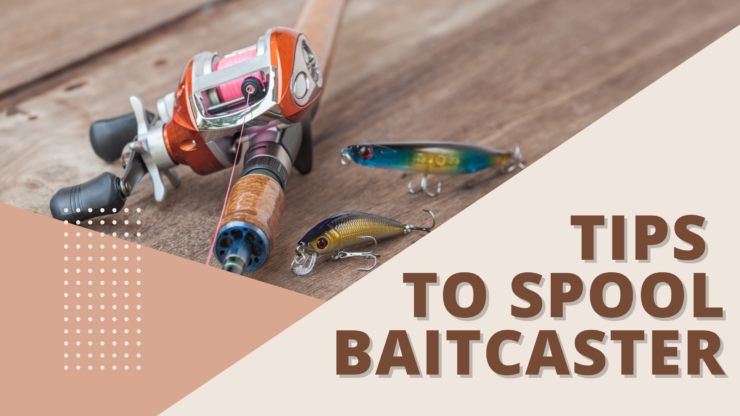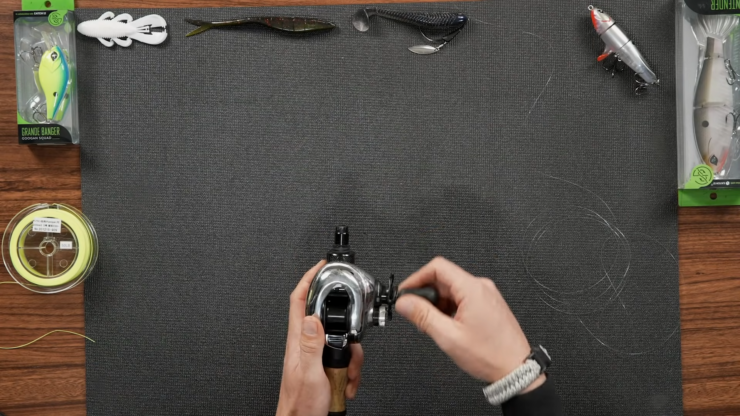Spooling a baitcaster can seem like a challenge, especially if you’re not used to doing it yourself often or if you’re a beginner and don’t know how to do it properly. Thankfully, this task isn’t as daunting as it may sound.
The truth is that practice makes perfect, and with a little bit of time and practice, you can learn to spool a baitcaster like a real pro in no time. However, you need to know how to do it properly to avoid any issues and frustration along the line.
Using online resources to learn a task like this one can be a double-edged sword. The info you find online can often be confusing and the steps unclear, so figuring out how to perform in real life can be more difficult than it has to be.
Luckily, we made sure that the step-by-step guide on how to spool a baitcaster we provided is as user-friendly and clear as possible. That’s why you won’t have to worry about experiencing any issues and confusion—all you need to do is take a look below to see how to do this in only a couple of minutes!
A Step-By-Step Guide on Spooling a Baitcaster
The first thing you want to do before the spooling process is gathering your necessary equipment, including your rod, reel, and line. Once you do that, follow the next steps to spool your baitcaster:
1. Attach Your Reel to the Rod
The first thing you’ll need to do is attach your baitcasting reel to the rod. You can use a line spooler to place the line on the baitcaster, but it isn’t necessary. Accomplishing the same by using the rod instead is not only possible but perhaps also easier.
2. Feed the Line Through
Now, you want to feed your line through the first guide on your rod. This will be helpful in applying the tension during the process and running the line from the correct direction towards your baitcaster. Once you do that, you need to feed the line through the guideline of your reel as well. This step is essential since the guide tends to move from one side to the other when you spool, so you need to ensure that your line is filled evenly.
3. Tie Your Line
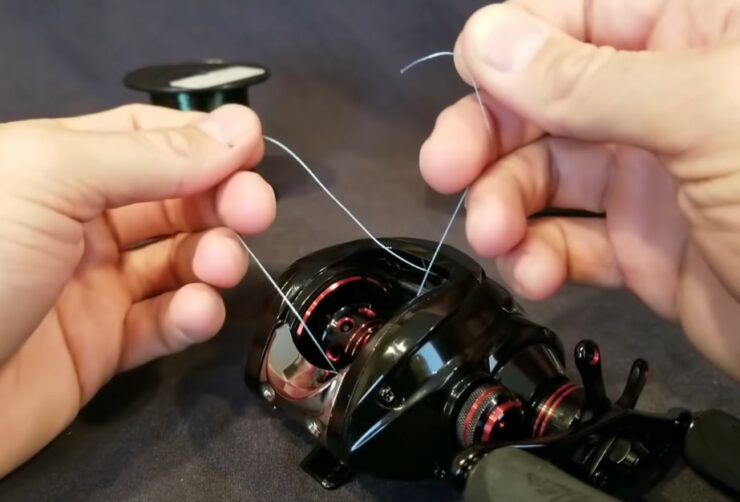
Tying your line to the spool of your reel is the next required step. If you have a baitcaster with holes in the spool, you can easily use two of those holes to thread the line through, and then tie it down to a knot. On the other hand, if there are no holes in your spool, you can wrap your line around the spool and tie it in the same manner.
4. Trim the Line
Once you successfully tie the line, you will probably have some excess. This excess needs to be dealt with, so you should trim the ends of your line off. You should make sure not to skip this step because this excess can stick out and get in the way of your main line when you’re in the middle of the spooling process. Obviously, you’ll want to avoid that, so snip that end off to avoid such issues.
5. Start Spooling the Line Onto Your Reel
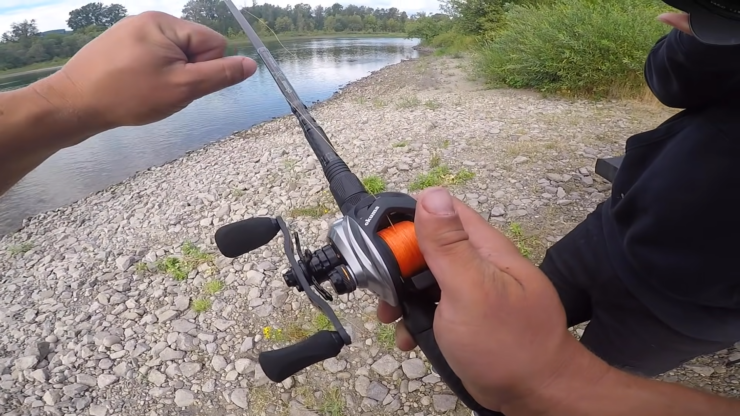
You will now get to the spooling of your line onto the reel by turning the handle slowly. This is potentially the most important part of the spooling process, so you should make sure you’re being as careful as possible.
You should also make sure that you’re keeping the tension on the line while you’re doing this, as well as ensure that the filler spool ends up rotating in the same direction as the one on your baitcasting reel. This will help you avoid line twisting.
6. Fill the Spool
The final thing you should remember is not to fill your baitcaster entirely. You should always make sure that there is a 1/8th inch gap left between your line and the edge of the spool. That way, you can avoid any backlash and have a much easier time fishing, as well as the most enjoyable and hassle-free experience.
Spooling a Baitcaster With a Braided Line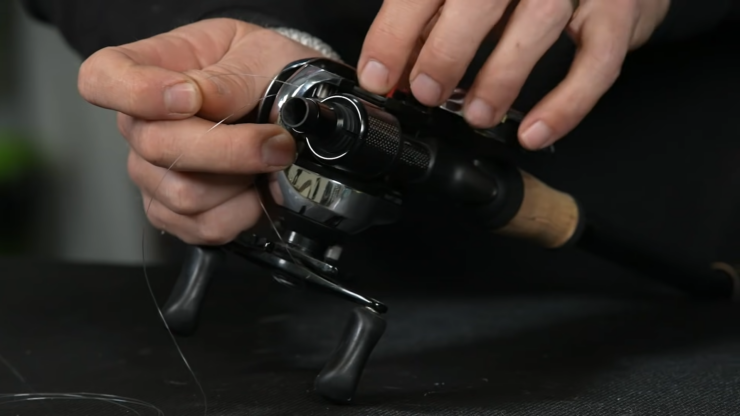
If you want to use a braided line to spool your baitcaster and you’re wondering if the process is any different, we got you covered. Braided lines are typically less stretchy than most others, which makes them a very popular option when it comes to fishing. Thankfully, spooling your baitcaster with a braided line isn’t that different.
The process pretty much remains the same, with one exception—you need to make sure to use a monofilament backing before you start spooling your baitcasting reel with the braided line.
What Is the Best Line for a Baitcaster?
You might be wondering what type of fishing line would be best for a baitcasting reel. The answer to this question depends on your skill level. If you’re a beginner, you might want to start by using a standard monofilament line. It is the most affordable one and has the least backlash tendency, which is excellent for everyone who’s only starting to get a grip on the rod and learning to fish.
On the other hand, if you are a bit more experienced, you can go for the braided or fluorocarbon line. The braided one is the strongest and doesn’t stretch, which is great for catching bigger fish. But, it is a lot more visible than the fluorocarbon one which is practically invisible.
Keep in mind that the fluorocarbon line, although super convenient and very effective, is also more expensive than the other two and generates more backlash.
Conclusion
You don’t have to struggle to learn how to spool a baitcaster with ease! It’s true that learning to do this quickly and efficiently will take some time and practice, but once you master it, you’ll be able to do it in the blink of an eye at any time and anywhere. Our neat guide provides you with the quickest way to learn how to tackle this task, so use it to avoid wasting time, and start fishing like a pro in record time!
Adelaide Gentry, a seasoned kayaking enthusiast and expert, is the driving force behind KayakPaddling.net. With over a decade of experience navigating the world’s most challenging waterways, Adelaide combines her passion for adventure with a deep knowledge of kayaking to provide insightful and practical guidance for paddlers of all levels.
Related Posts:
- 16 Best Kayak For Beginners 2025 - Kayaking Adventure Gear
- Heavy Duty Fishing: 11 Best Rods And Reels For Big Fish 2025
- 10 Best Fish Finders Under $200 2025 - Top Affordable Picks
- 10 Best Inflatable Kayak 2025 - Rivers, Lakes & Open Seas
- 10 Best Kayaks For Camping 2025 - Lightweight and…
- 12 Best Motorized Kayak 2025 - Start Your Aquatic Adventure!

